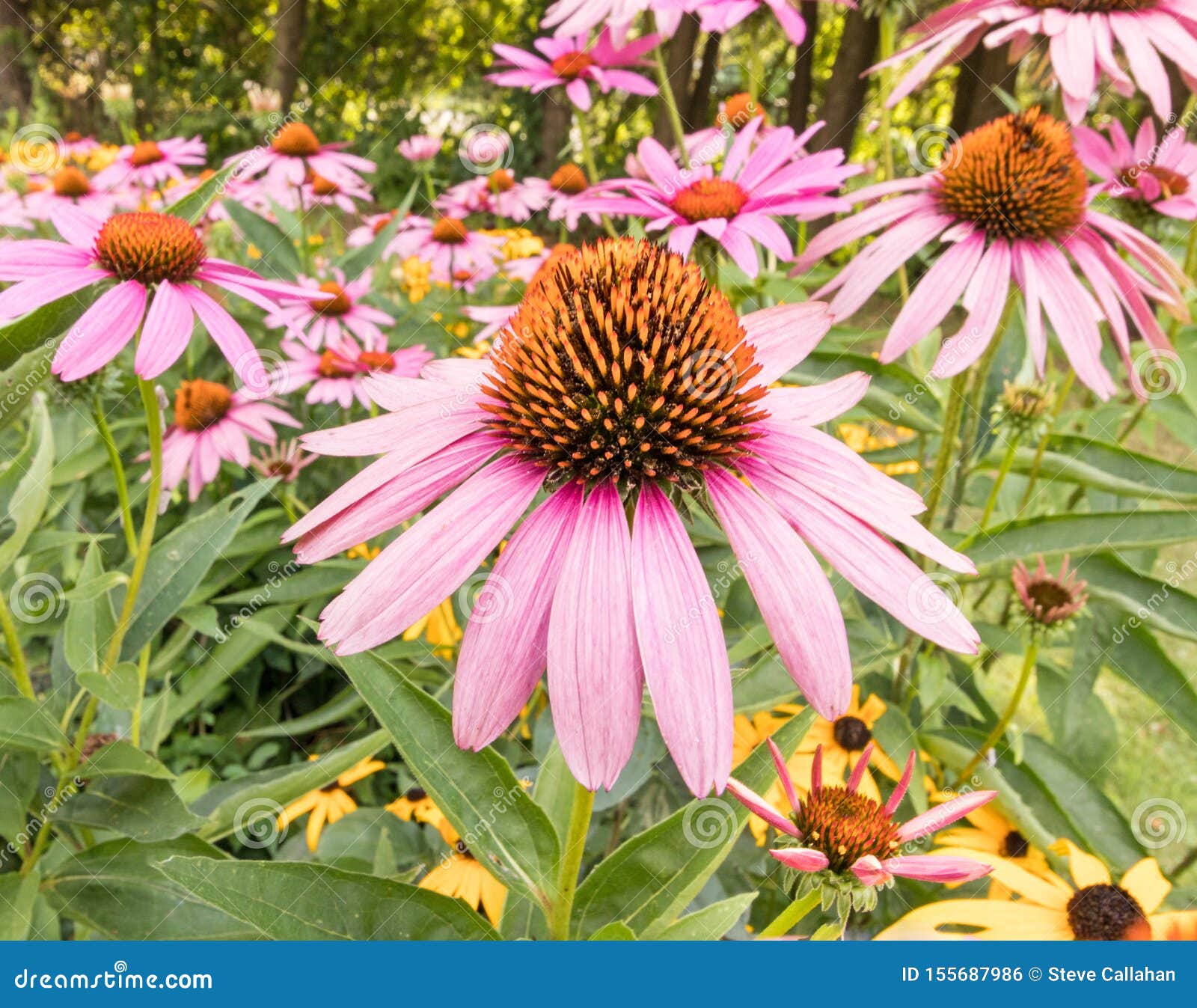
Plants typically grow on rigid stems to 24-30” tall. Coarsely-toothed, dark green leaves (3-6” long). It is a clump-forming perennial that features 7” diameter flowers with non-drooping ruby-pink rays and large orange-brown center cones. ‘Ruby Giant’ is a purple coneflower cultivar that is noted for its large, bold, dark-ruby pink flowers. Genus name of Echinacea comes from the Greek word echinos meaning hedgehog or sea-urchin in reference to the spiny center cone found on most flowers in the genus. The dead flower stems will remain erect well into the winter, and if flower heads are not removed, the blackened cones may be visited by goldfinches or other birds that feed on the seeds. Showy daisy-like purple coneflowers (to 5" diameter) bloom throughout summer atop stiff stems clad with coarse, ovate to broad-lanceolate, dark green leaves. black-eyed Susan - tropical African climbing plant having yellow flowers with a dark purple center. 88 to 1.2 dry liters in volumeġ.0 to 1.3 dry quarts / 1.1 to 1.41 dry liters in volumeġ.1 to 2.1 dry quarts / 1.2 to 2.3 dry liters in volumeġ.7 to 2.3 dry quart / 1.87 to 2.53 dry liters in volumeĢ.26 to 3.73 dry quarts / 2.49 to 4.11 dry liters in volumeģ.5 to 4.3 dry quarts / 3.85 to 4.74 dry liters in volumeġ.19 to 1.76 dry gallons / 5.24 to 7.75 dry liters in volumeĢ.32 to 2.76 dry gallons / 10.22 to 12.16 dry liters in volumeĢ.92 to 4.62 dry gallons / 12.86 to 20.35 dry liters in volumeĥ.98 to 6.08 dry gallons / 26.34 to 26.Echinacea purpurea, commonly called purple coneflower, is a coarse, rough-hairy, herbaceous perennial that is native to moist prairies, meadows and open woods of the central to southeastern United States (Ohio to Michigan to Iowa south to Louisiana and Georgia). Related to black-eyed Susans: coneflowers. 96 dry liter in volumeġ.4 dry quarts / 1.59 dry liters in volumeġ.89 of a dry quart / 2.08 dry liters in volume Keep in mind, specific varieties and different growing conditions can affect the rate at which plants grow. Get started today, order yours from our experts at Nature Hills for the best selection! Hummingbirds and other beneficial pollinators will also visit your garden adding to the spectacular show! Make sure you have seating nearby, you'll want to watch this "Nature Television" show of your very own. Purple coneflowers have rigid stems that last long after the blooms have withered away.

Black-eyed Susans grow up to 3 feet tall and spread to 2 1/2 feet wide. Purple coneflowers are the taller of the two, reaching heights to 5 feet and spreading up to 2 feet wide.

You'll love watching butterflies and wonderful goldfinch birds flit from flower to flower, and so will your friends and family. What is the difference between coneflower and black eyed Susan Size and Form. Leave these plants standing for winter interest, and only trim back in early spring. Next, layer in a fine textured ornamental grass, such as Maiden Grass or Prairie Dropseed and you'll achieve a visually appealing combination that works from the late spring through fall. For the best look possible, plant in clusters of odd numbered groups of 3, 5, 7, or 9. Or, choose to partner with other rough textured native favorites such as Black-Eyed Susan or Blanket Flower. Underplant with Ajuga groundcover to complete the look. They'll pair beautifully to create a restful oasis with other cool tones, such as False Indigo, Butterfly Bush, Salvia or Russian Sage. Plant these in long drifts of gentle zig zags in front of larger shrubs to create a very natural look in your backyard. The Purple Coneflower (Echinacea purpurea) is a prairie native that really delivers.

Smart Landscapes rely on rugged, low maintenance native perennials that come back year after year and produce long-lasting blooms all season long.


 0 kommentar(er)
0 kommentar(er)
